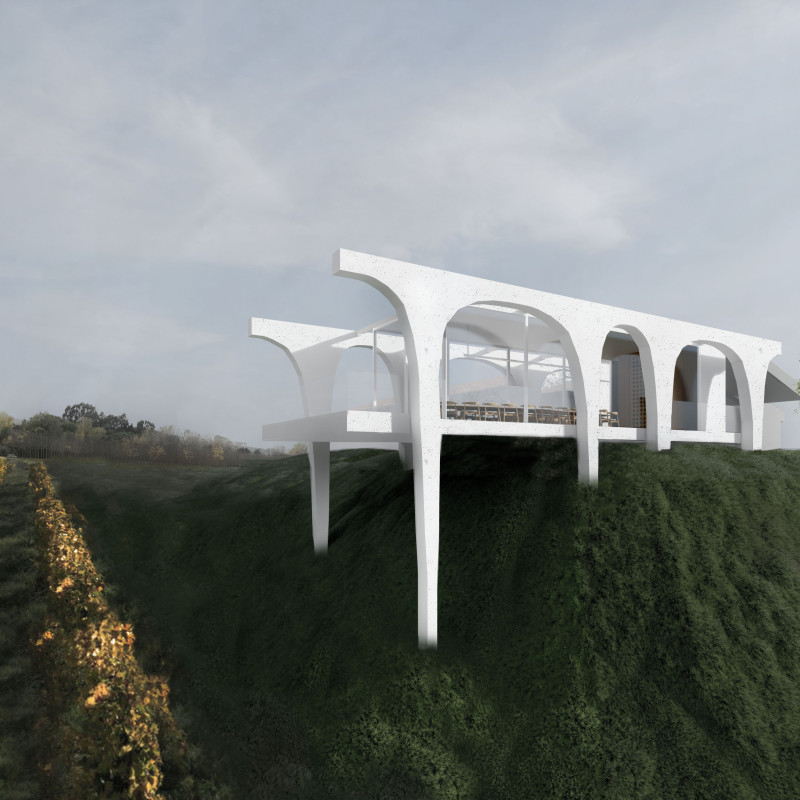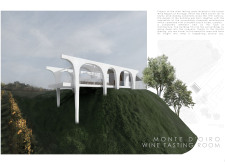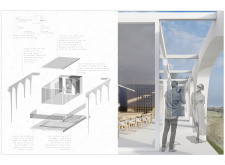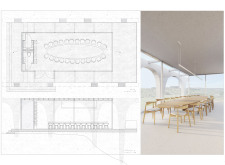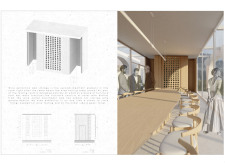5 key facts about this project
At its core, this architecture serves multiple functions that cater to diverse user needs, from communal gathering spaces to private areas for reflection and work. The layout of the project is intentionally designed to promote social interaction, with open areas that encourage engagement while still allowing for quiet retreats. The flow of the interior spaces is intuitive, guiding occupants naturally from one area to another, enhancing both usability and experience.
The project's materiality is a fundamental aspect of its design philosophy. A selection of materials has been employed thoughtfully, including reinforced concrete for its structural integrity, glass to maximize light and create transparency, and timber which adds warmth to the interior spaces. These materials not only meet the functional requirements of the architecture but also establish a dialogue with the natural surroundings, ensuring that the building feels both modern and grounded. The careful consideration of local materials is evident in the facade, which integrates stone elements that echo the region's geological features.
Key design components include the entrance, which acts as a welcoming threshold, drawing visitors into the space. The layout emphasizes accessibility, ensuring that all users can navigate the building with ease. Landscaped areas are skillfully woven into the overall design, providing outdoor spaces that complement the indoor environment. Gardens and green features enhance the user experience, offering areas for relaxation and connection with nature.
Unique design approaches are evident throughout the project, particularly in the incorporation of sustainable practices. Features such as rainwater harvesting systems, solar panels, and green roofs reflect a commitment to environmental responsibility, allowing the building to operate efficiently and reduce its carbon footprint. These elements are integrated into the overall design rather than being added as an afterthought, illustrating a comprehensive approach to sustainability that underscores the project’s relevance in contemporary architecture.
This architecture stands out not merely as a physical structure but as an integral part of the community it serves. It aligns with the needs and desires of its users, fostering a sense of ownership and belonging. The thoughtful design responds not only to the immediate context but also to broader ecological and social considerations, creating a space that is both functional and meaningful.
For those interested in exploring this project further, a detailed examination of the architectural plans, sections, designs, and ideas is recommended. Engaging with these elements will provide a richer understanding of the thought processes and design strategies that informed this architectural endeavor. By delving deeper into the project presentation, readers can appreciate the intricate balance of functionality, materiality, and aesthetics that this architecture embodies.


